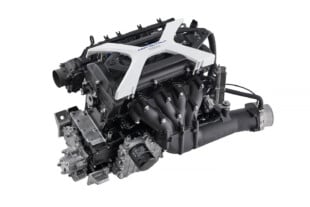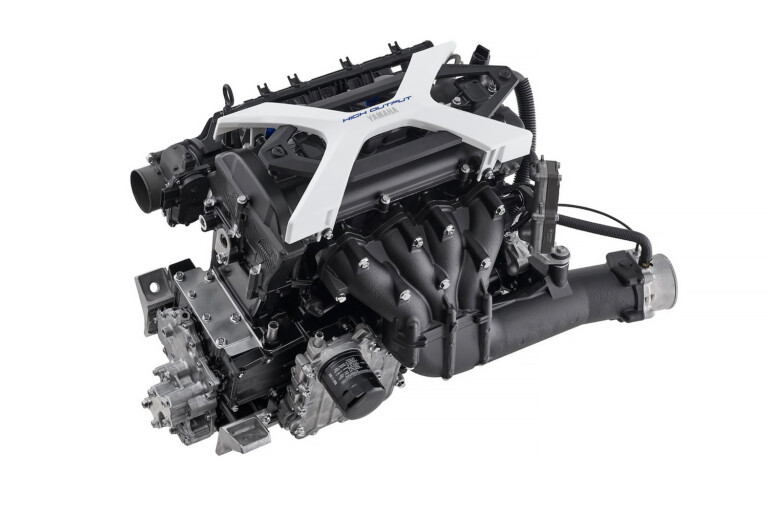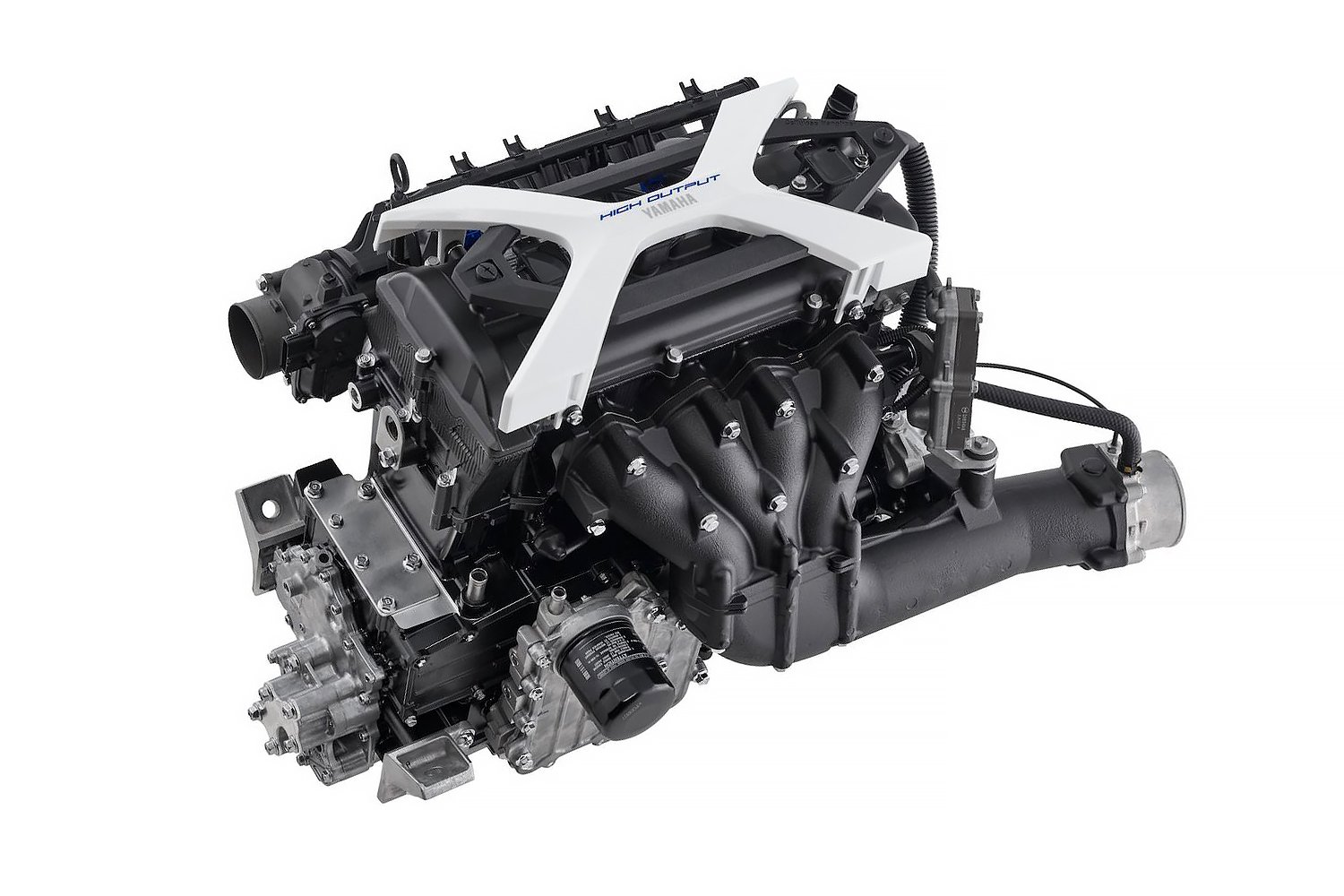Valve timing is one of the most critical contributions to the engine’s combustion process. The timing events are controlled by a gearset and chain and can be adjusted to precisely determine the opening and closing of the intake and exhaust valves, thereby extracting optimum power and performance.
Overhead-valve engines use a single gear attached to the face of the camshaft and another gear attached to the crankshaft snout to spin the camshaft. An overhead-camshaft engine like the Ford Mod motor uses a similar concept but a single (or sometimes dual) camshaft atop each cylinder head. The cams are driven through a pair of much longer timing chains to actuate the valves. A set of camshaft followers (much like rocker arms) ride atop each valve and track the camshaft above to open and close the valves at the proper time. Overhead camshaft engines are much more efficient, as the lack of pushrods and reduced weight of the followers allow for higher engine speeds and often dramatically improved performance.
Increasing Durability
Upgrading the timing set is recommended step when adding more aggressive camshafts, forced induction or other power-enhancing trick. Tim “Ike” Eichhorn at MPR Racing Engines in Boynton Beach, Florida, offered to demonstrate the installation of a Cloyes Hex-A-Just timing sets on a 2-valve Ford Modular engine. Besides improving performance and durability, the Cloyes Hex-A-Just offers flexible timing adjustments to set the cam timing exactly as desired. The process is not as involved as one might think despite the added complexity of the dual timing chains and multiple gears, other than the added time to ensure that both camshafts are operating according to the intended range specified by the manufacturer.
Left - Cloyes does not use an adjustable crankshaft sprocket - all of the adjustment is done at the cylinder head side of the equation. Middle - In this application, Borg-Warner OE-style chains are used. Just like with the OE products, if you line up the colored links on the chain with the dots n the camshaft and crankshaft gears, you should theoretically be installing the kit 'straight-up', but that's not always the case due to tolerance stacks. Right - The Cloyes camshaft gears use this unique adjust mechanism to provide up to four degrees of adjustment in either direction.
The 282-cubic-inch engine belongs to a longtime MPR customer who runs a ton of boost with a Vortech YSi supercharger. It was in the shop for a refresh and piston change. Also, the cylinder heads were sent to Modular head guru Kris Starnes of Kris Starnes Racing, who performed a Stage 3 porting package. Upon return to MPR the heads received a set of PAC valve springs and retainers, Ferrea valves and two new Bullet camshafts. The Cloyes parts was selected to set the timing events up exactly where Bullet intended,
The Parts
The Cloyes set used in this build is Part Number PN 9-3166A, which covers the 2001-04 Modular 2-valve engine. Small differences in construction necessitate a part number change on earlier ’96-’00 2-valve engines [PN 9-3165A] but the overall design is the same.
Six Degrees Of Separation
When the cam company develops the camshaft profile, the measurements are very specific and ground into the camshafts using incredibly precise CNC machinery to assure the end user the exact specifications are as stated on the camshaft card. Any deviation from those dimensions upon installation can cause a loss of power and torque – which is exactly the opposite of why performance camshafts were purchased in the first place.
The Ford Modular engine is especially sensitive to camshaft timing, and the factory components leave plenty on the table in terms of precision – they can be off by up to four degrees from the factory, and a total of eight degrees between the pair if both gears are at the far extreme end of the range. Too much advance and the valve can run into the piston, and too much camshaft retard will severely hurt power.
The camshaft and crankshaft sprockets are CNC machined from premium billet steel, then induction hardened and oil-quenched during the Cloyes heat treating process. The sprocket itself is a 2-piece design that retains OEM-style function. The unique Hex-A-Just adjuster plate is machined from stainless steel and replaces the OE cam sprocket washer. There are no differences in overall dimension or operation from the factory parts when using the Cloyes kit, except for the adjustability gained through their installation. The Hex-A-Just system allows for plus or minus four degrees of adjustability on each camshaft.
“The oval holes in the adjuster plate are what allow the plate to pivot over the inner sprocket,” explains Cloyes’ Cody Smith. “Each dot on the camshaft gear is one degree of adjustment – the top center one is zero, to the left is retard, and to the right is advance. We provide a keychain with the adjuster tool in every package; if you’re trying to be 100 percent exact we still recommend that you degree in the camshafts, but using the key with the dots you can get it just about right on.”
The camshaft index dowel on the adjuster plate indexes with the camshaft keyway; there is a concentric index lip on the adjuster plate that fits snugly into the bore of the sprocket to permit adjustment. As the adjuster tool is moved from position to position, the sprocket achieves the desired setting and gets locked down with the two adjustment plate bolts. The cam bolt is already tight on the adjustment plate at this point in the process. The inner adjustment plate is the only part bolted to the camshaft; the outer sprocket ring is attached to the adjustment plate via the two attachment bolts.
Left - Eichhorn made this nifty tool from an old NMRA Hot Street pushrod. It fits in the spark plug hole with ease and helps him to map out Top Dead Center. Left Middle - Setting Top Dead Center on the engine is the most important part of the process. Right Middle - Rigid components need to be used when setting TDC; Eichhorn relies on a Comp Cams degree wheel and a sturdy piece of wire in this instance. Right - Setting the dial indicator for the valve at 0 degrees. The whole goal is to position the point of maximum lift of the #1 intake lobe with TDC of the #1 piston.
Install and Tech Tips From Ike
As this engine is a high effort, bad-to-the-bone high horsepower setup and not a typical OE-style rebuild, it can benefit greatly from balancing out the power between banks by properly degreeing in the camshafts.
“You’re trying to make sure that your intake opening and closing and exhaust opening and closing is working exactly as intended by the camshaft manufacturer.“ – Tim Eichhorn, MPR Racing Engines
“Say your camshaft is supposed to be in at a 112 degree centerline and you degree it in and it’s in at a 109 – in the past you had to take the factory sprocket and grind out the keyway and play with it to make everything work, but this setup from Cloyes makes it easy,” adds Eichhorn. “All you have to do is degree the camshaft in, adjust it where it needs to be, check it again, and lock it down. Boom – you’re on the money.”
The Ford 2-valve Modular takes approximately two to three hours to degree the camshafts in properly, according to Eichhorn, while the 4-valve and Coyote variants can take substantially more time due to the complexity of the quartet of camshafts used in those platforms.
Left - Here's the Cloyes tool that's used for adjustment. The notch on the top of the tool should be pointed towards the corresponding dot to set the timing. The middle dos it straight up, the four to either side are degrees of advance or retard. Middle - Blue threadlocker is recommended on the ARP adjuster bolts prior to torquing them down - red is too agreessive and won't permit removal. Right - Torque the bolts to 10 foot-pounds.
His suggestion is to start with the left side first and get the engine timed up according to the camshaft card. This is completed with no rocker arms in place, and they use a dummied-up solid lifter that’s installed into the head so they can use one of the actual valvesprings instead of a checker spring. Using the solid lifter permits precise measurement without fear of the factory hydraulic lifter collapsing, and is the only way to successfully time one of these engines, according to Eichhorn.

At the very end, it’s time to pull the pin on the grenade, and let the tensioners take the slack out of the chains.
“This setup is nice because it actually locks down in two places – the cam gear has two ARP adjuster bolts that lock it down, and also at the big center camshaft bolt. We always replace all of the torque-to-yield fasteners in these engines with ARP hardware too,” he says.
In order to degree the camshafts in, a few tools are required, most notably the factory Ford camshaft rotation tool, which seen in the photos along with a piston stop. Chains for both sides are installed but are not tightened down until the measurements are taken. Top Dead Center on the compression stroke is located, then the dial indicator is moved to the top of the valve retainer.
From there, Eichhorn checks the .050-inch lift numbers to see how close it is to see what the cam card says. Next he checks the intake closing numbers, then the intake centerline to determine what adjustments, if any, will need to be made.
Once the left side of the engine is complete, he repeats the entire process on the right side of the engine to fine-tune the deals, and the process is finished. Check out the install photos for more details!
































